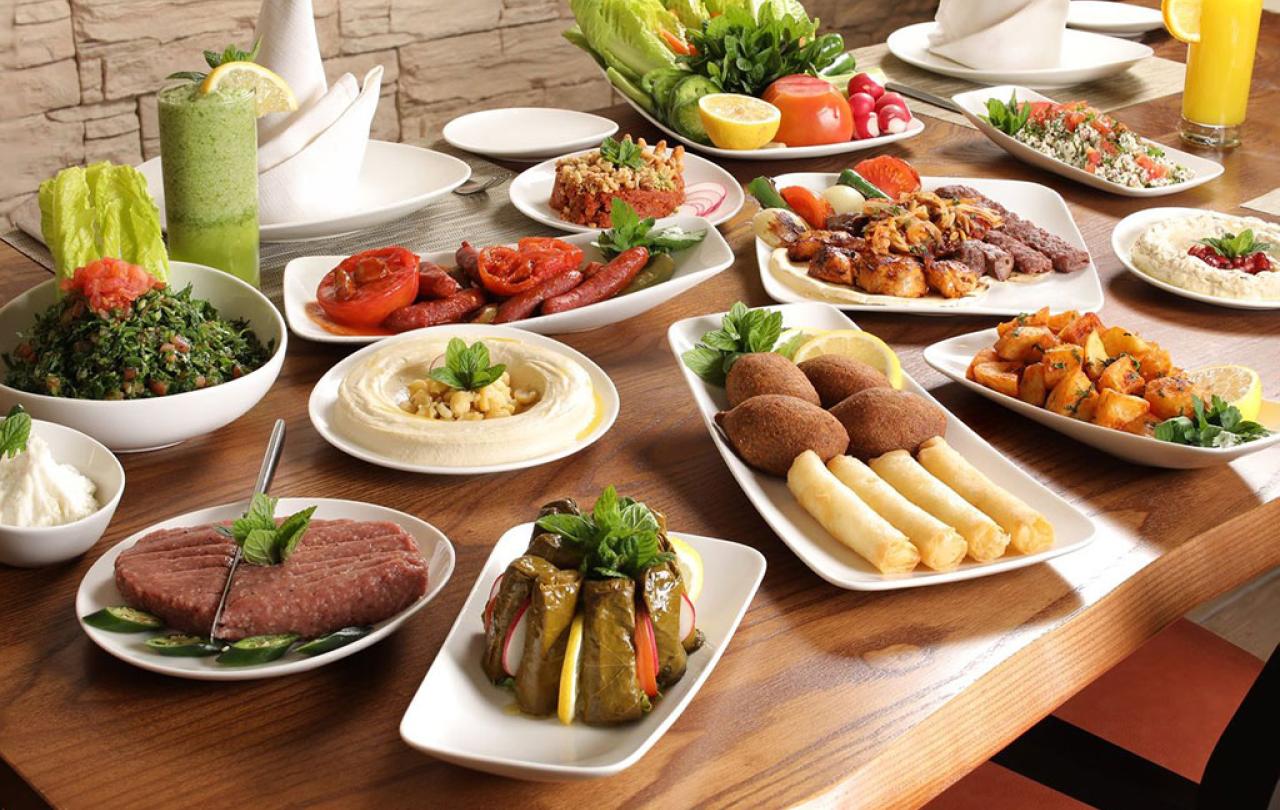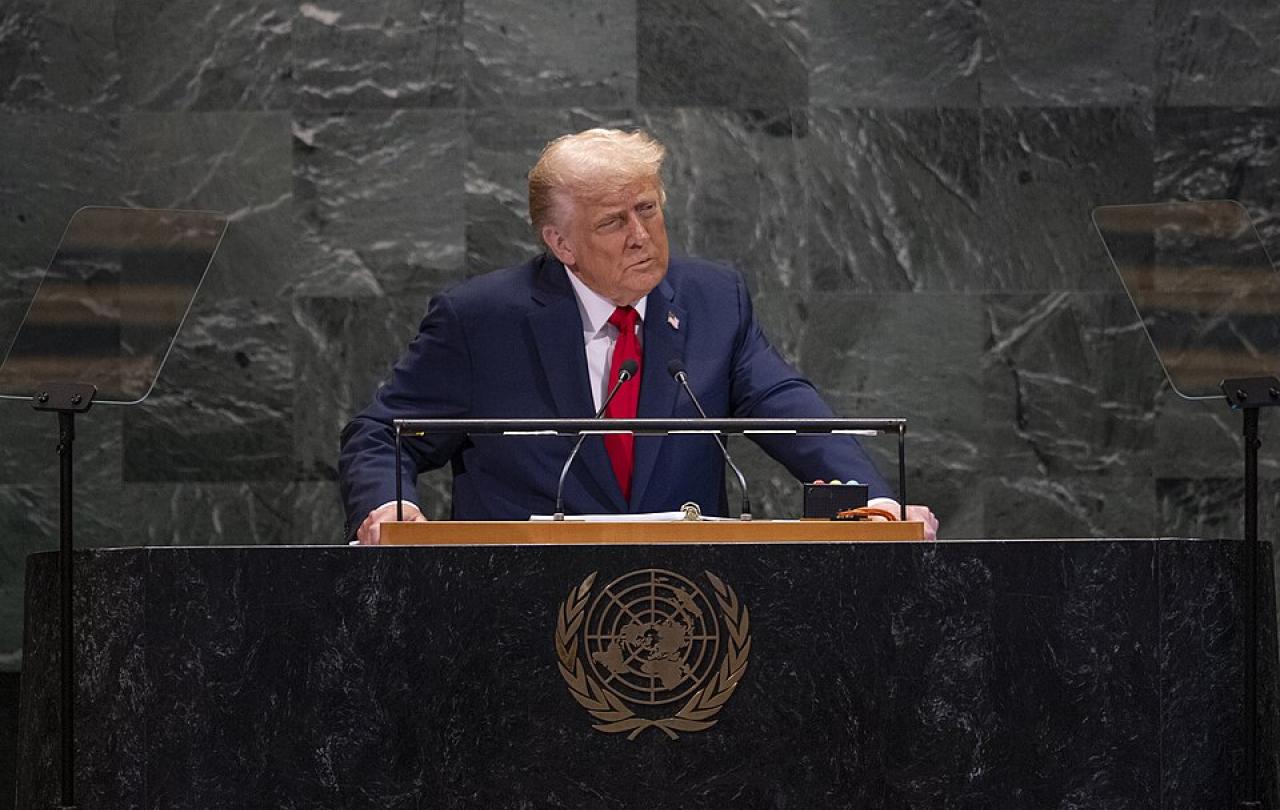
Did you know that a traditional Lebanese meal is usually served in four or five courses?
First comes the vegetarian feast; a smoky eggplant dip, a mountain of pita, grape leaves that are rolled around vegetables, rice and nuts, bowls of pickled turnips and ribboned cucumber.
Then a hint of meat is introduced; chicken wings and slow-cooked liver, beef meatballs unfused with onion and parsley and smothered in breadcrumbs, all served alongside more dips, more vegetables and more pita.
The third time the servers come around, you are presented with the climax of the meal - a plate of painstakingly cooked lamb and chicken skewers. Only once that has been enjoyed can you expect desert before a final course of fresh mint tea and little almondy-flavoured treats.
Each time the servers re-appear, you find yourself convinced that there cannot be enough room on the table to accommodate yet another round of plates. And each time you realise that you were wrong. Lebanese cuisine, similar to many other Middle Eastern cuisines in this respect, is designed to be enjoyed slowly, continually, and communally.
I did not know this.
When I found myself at a Lebanese restaurant in their neighbouring country of Jordan (affectionately referred to as ‘the oasis of the Middle East’ throughout the evening), I naturally loaded up my plate on the first round, wondering why everyone around me was being so overly polite with their miniature portions. That was, of course, my mistake. By the third (and arguably best) course, I was defeated. My far savvier dining companions that evening were Christians leaders from across Jordan, the Middle East, and beyond. Among those present were Anglican bishops and archbishops, those whose provinces spanned countries and even continents. Leaders from the Oriental Orthodox family – representing Coptic Orthodox, Syriac, Indian, Greek and Armenian. There were Maronite leaders from Lebanon, Lutheran leaders from Jordan, and Anglican leaders from Israel to name but a few. And then there was me. I am twenty-seven years or so into this Christian life of mine, and as well as being exposed to six or seven different expressions of ‘church’ in my lifetime, I also read a lot. So, I had kidded myself into thinking that I understood the immense diversity encapsulated in the term ‘Christianity’. It turns out that I was wrong, again (are you beginning to sense the theme of my trip?).
If there is such a thing as sacred geography, I think I may have experienced it that afternoon. I was able to soak in the past, and it was glorious. Almost as glorious as the glimpse of the present that I was granted that evening.
Utterly honoured to be at that table in Jordan’s capital city of Amman, I was exposed to more diversity in that one meal than I had experienced in my entire life. I am truly not exaggerating when I say that there wasn’t a single minute spent at that restaurant where I wasn’t soaking up something entirely new; whether that be a story, a statistic, a taste or a custom. There were seemingly endless details to learn about differing expressions of a faith that I knew so well, lived out in contexts that I knew not at all. The whole experience was a sledgehammer to any notions, consciously denied yet subconsciously held, that Christianity had come to set up its largest camp in Europe.
On the contrary; we are, at present, but a quarter of the story.
Furthermore, the Middle East, in many respects, is the birthplace of Christianity. These countries are the ‘biblical heartlands’, as Rupert Shortt puts it. The Christian presence there dates back to the lifetime of Jesus Christ himself, who travelled and taught throughout the then Roman-occupied lands. As a Biblical studies scholar, one of my favourite oddities of Christianity is that it is, to a degree, situated. There’s human context involved; tangible, immersible, learnable context. The death and resurrection of the Son of God happened in human history. Of course, Christianity simultaneously bursts the banks of such contexts; in a far truer way it is unplaceable and certainly uncontainable, transcending time, space and matter. It resides beyond all that we can measure. God is, after all, over all things, through all things, and in all things (to borrow a phrase from Paul… who wrote this in a particular letter, to a church rooted in the particular city of Ephesus, during the particular timeframe of 60-62 AD. So you see my point…).
But still, the context is there: the depth of history, the breadth of legacy. As Augustine once said of the Church: it is on a pilgrimage through time. And I would suggest that nowhere is such a pilgrimage more obvious than the ‘biblical heartlands’ of the Middle East. Indeed, one of the variables that fed into me being embarrassingly eager at the dinner table that evening was the appetite that had been worked up that day. An appetite caused by venturing into the Jordanian wilderness, walking along the Jordan River, journeying up Mt. Nebo, looking out over the landscape that one can find detailed in the pages of the Bible.
‘Not a bad place to have a cup of tea, aye?’, remarked the Archbishop of Dublin (who knows these regions well), as we sat next in the grounds of a Franciscan Monastery on the top of Mt. Nebo, looking out over the Dead Sea and all that surrounds it.
If there is such a thing as sacred geography, I think I may have experienced it that afternoon. I was able to soak in the past, and it was glorious. Almost as glorious as the glimpse of the present that I was granted that evening.
I began to ponder at length what faith looks like when it is laced with defiance. By the third course I was beginning to appreciate (albeit in an incredibly limited sense) what hope feels like when it must be stubborn to survive.
Over a long and shared meal, the kind that makes getting to know the stranger opposite you quite inevitable, I was able to hear about what it’s like to be a Christian in the Middle East in the here and now. The hospitality extended to me at the table included me being so generously provided with stories of what it can be like to be a Christian in their contexts.
Of course, many stories shared throughout my time in Jordan were pertaining to the on-going Israel-Palestine conflict. I was able to speak with a Greek Orthodox Bishop about the Greek Orthodox church, filled to bursting with refugees, which was struck and destroyed in a Gaza City blast. I was able to hear about the Anglican-run Cancer Treatment Centre of the al-Ahli Arab Hospital, which was hit and damaged in a similar way.
I learnt about the Christian communities who are readying themselves to respond to the needs and trauma of those who may, eventually, be able to seek refuge in their countries. I heard compassion flow from people whose eyes hadn’t for one moment turned away from the on-going plight of the Palestinian, nor the Israeli, people.
I also realised that evening, just how much there is much to be learnt about the faith that one has taken for granted, from those for whom the very same faith is a source of discrimination, even danger. The pressure that 360 million Christians across the world are living under is referred to by Rupert Shortt as ‘christianophobia’ and profoundly coined a ‘360-degree threat’ by Janine Di Giovanni.
I heard how it feels to receive word that members of your community have been executed for their Christian faith; how such news incites instant fear and unimaginable grief. I spoke to one man who plans to leave the country he’s currently residing in as soon as a certain political leader is no longer present, because according to him, this sympathetic leader’s presence is the only reason his Christian faith has been tolerated thus far.
And very quickly, I realised that I was no longer learning about these Christian leaders and the communities they represent, I was learning from them. I began to ponder at length what faith looks like when it is laced with defiance. By the third course I was beginning to appreciate (albeit in an incredibly limited sense) what hope feels like when it must be stubborn to survive. I glimpsed first-hand the difference that resilience can make to one’s compassion. Like I say, I was intending to learn about these communities, but I found myself learning from them.
Sitting at a table in a country that I had never been to before, with a group of people who were all strangers to me before this trip, trying to wrap my head around contexts that I have no experience of, the words of the afore-mentioned Janine Di Giovanni sprang to mind,
‘It (Christianity) combines ritual, which soothes in anxious times, with a vast sense of belonging to something much larger and greater than yourself.’
How, in that situation, where I had utterly misunderstood the meal-time etiquette, could it be that I felt a sense of belonging? On one level, it could very well have an awful lot to do with how naturally hospitality seems to come to people in Jordan, and it appears, the Middle East in general. But, I would suggest that it is something else too; something larger, something greater, something unseen.
Perhaps Christian community, in accordance with the Son of God upon which it is built, is both completely situated in one’s individual time and place, and simultaneously utterly un-containable.





